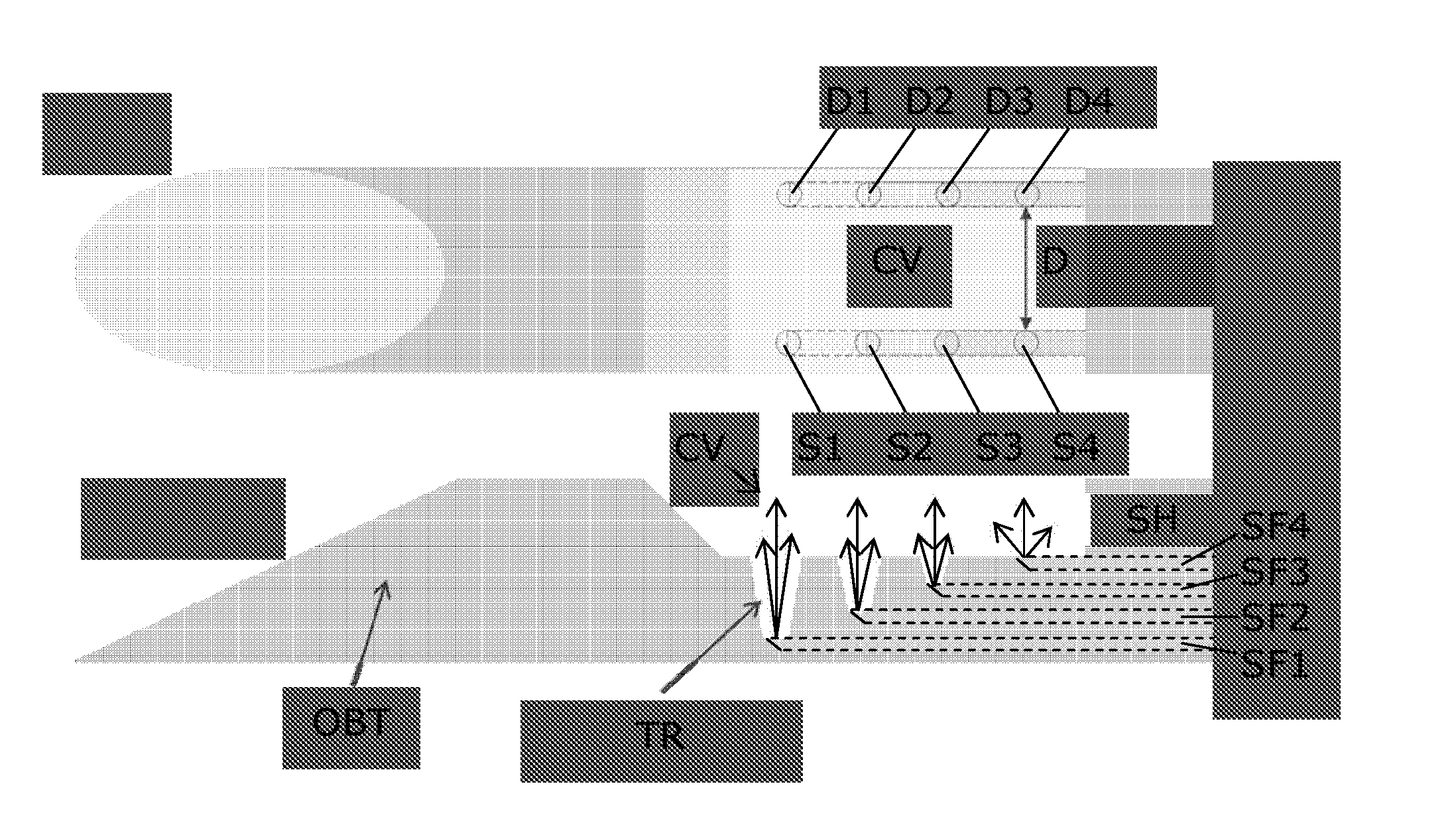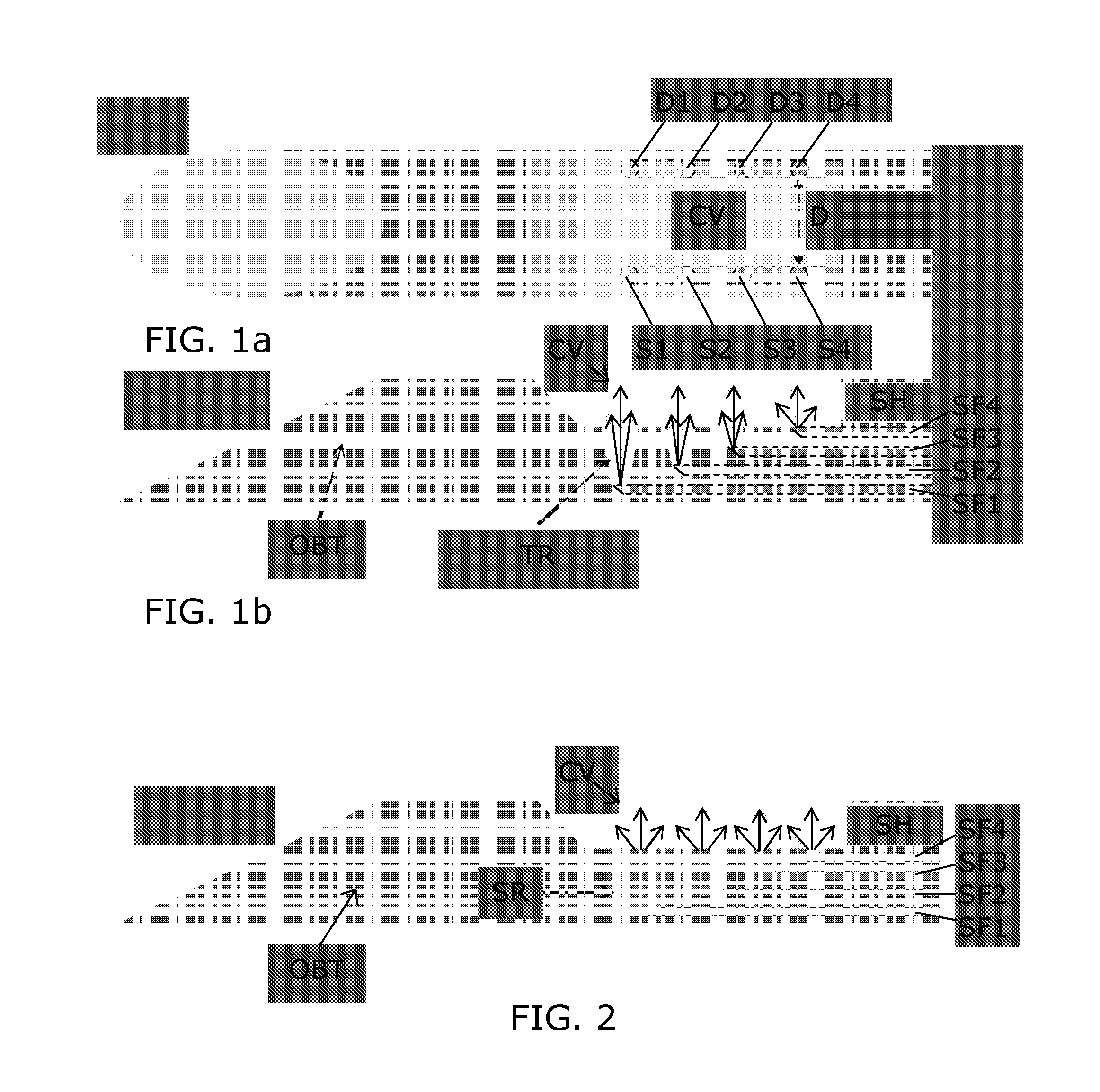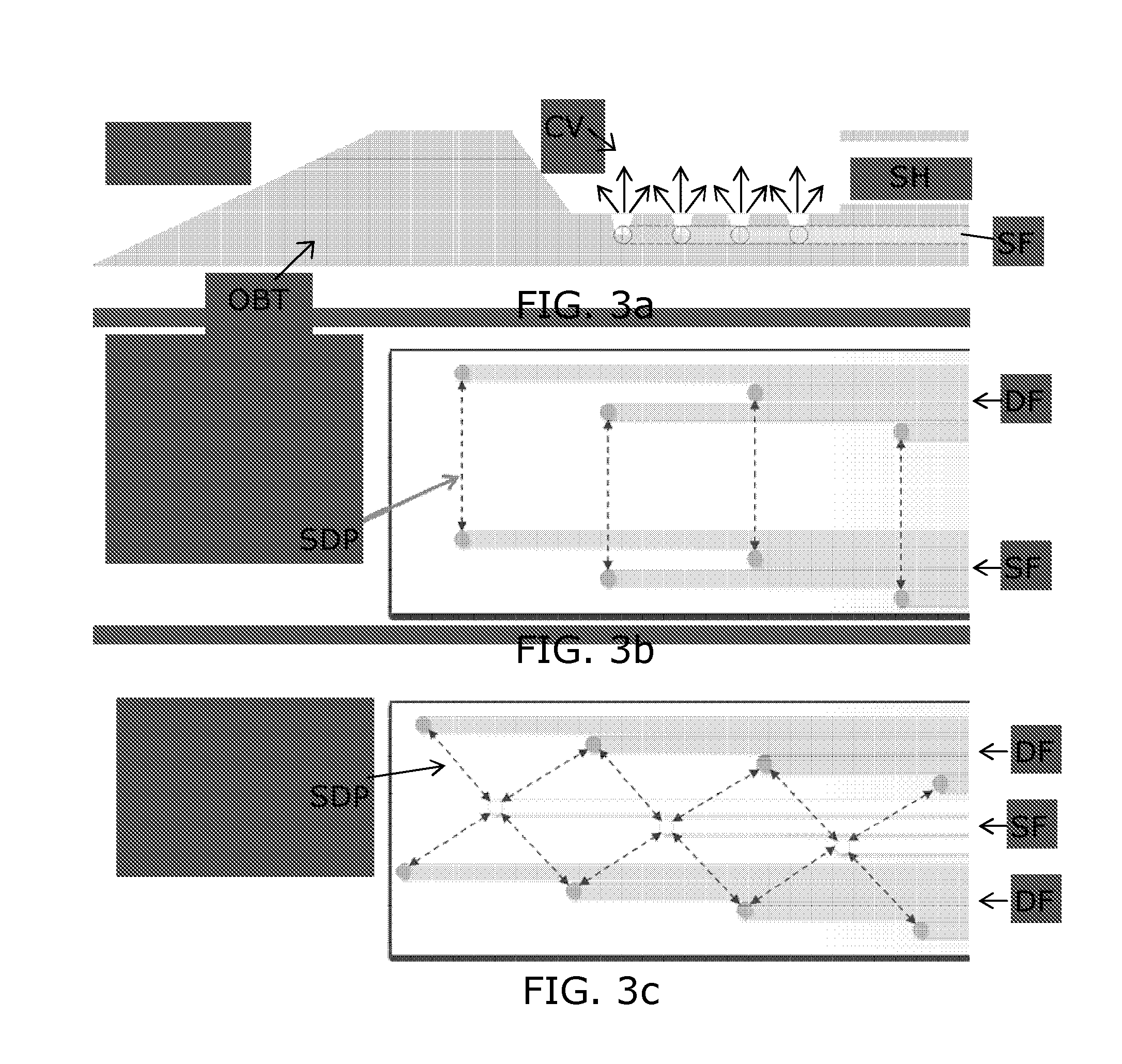Optical guided vacuum assisted biopsy device
a vacuum assisted and optical guide technology, applied in the field of medical devices, interventional devices, surgical instruments, etc., can solve the problems of not being able to reliably define and not being able to accurately diagnose the end point of the procedur
- Summary
- Abstract
- Description
- Claims
- Application Information
AI Technical Summary
Benefits of technology
Problems solved by technology
Method used
Image
Examples
Embodiment Construction
[0051]In the prior art, Vacuum Assisted Biopsy (VAB) needle or cannula are known, e.g. available from Devicor Medical Products, e.g. for performing biopsy in treating and diagnosing breast cancer. In such devices small sucking holes are embedded at the bottom of a notch forming a cavity in the interventional structure, which allow for sucking tissue into the cavity for facilitating the tissue cutting. A larger sucking hole adjacent to the cavity is then used for removing the cut tissue volume from the notch. In a normal procedure, the needle is positioned under the lesion. The tissue is then sucked (vacuumed) into the cavity, the tissue is cut by means of a cutter, and after completion of the cutting, the biopt is sucked away from the cavity via the hole adjacent to the cavity, and transported away from the interventional structure. The tissue is sucked into the cavity by applying a negative pressure (underpressure). After having been cut, the tissue is sucked out of the cavity and ...
PUM
 Login to View More
Login to View More Abstract
Description
Claims
Application Information
 Login to View More
Login to View More - R&D
- Intellectual Property
- Life Sciences
- Materials
- Tech Scout
- Unparalleled Data Quality
- Higher Quality Content
- 60% Fewer Hallucinations
Browse by: Latest US Patents, China's latest patents, Technical Efficacy Thesaurus, Application Domain, Technology Topic, Popular Technical Reports.
© 2025 PatSnap. All rights reserved.Legal|Privacy policy|Modern Slavery Act Transparency Statement|Sitemap|About US| Contact US: help@patsnap.com



